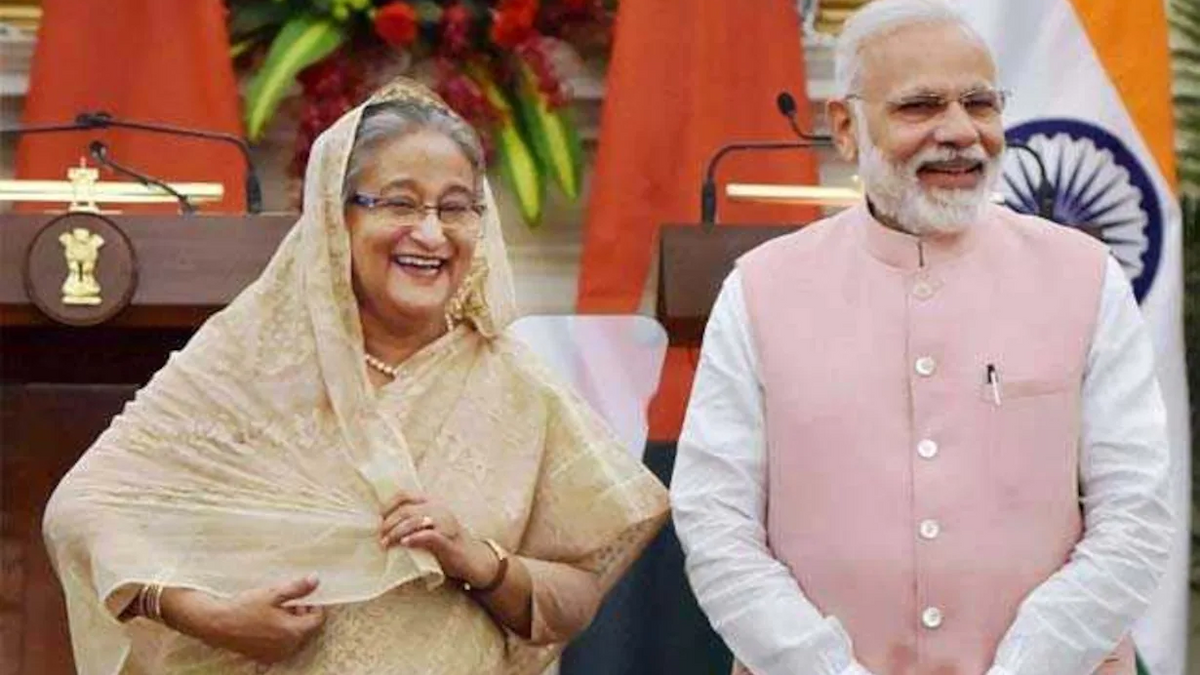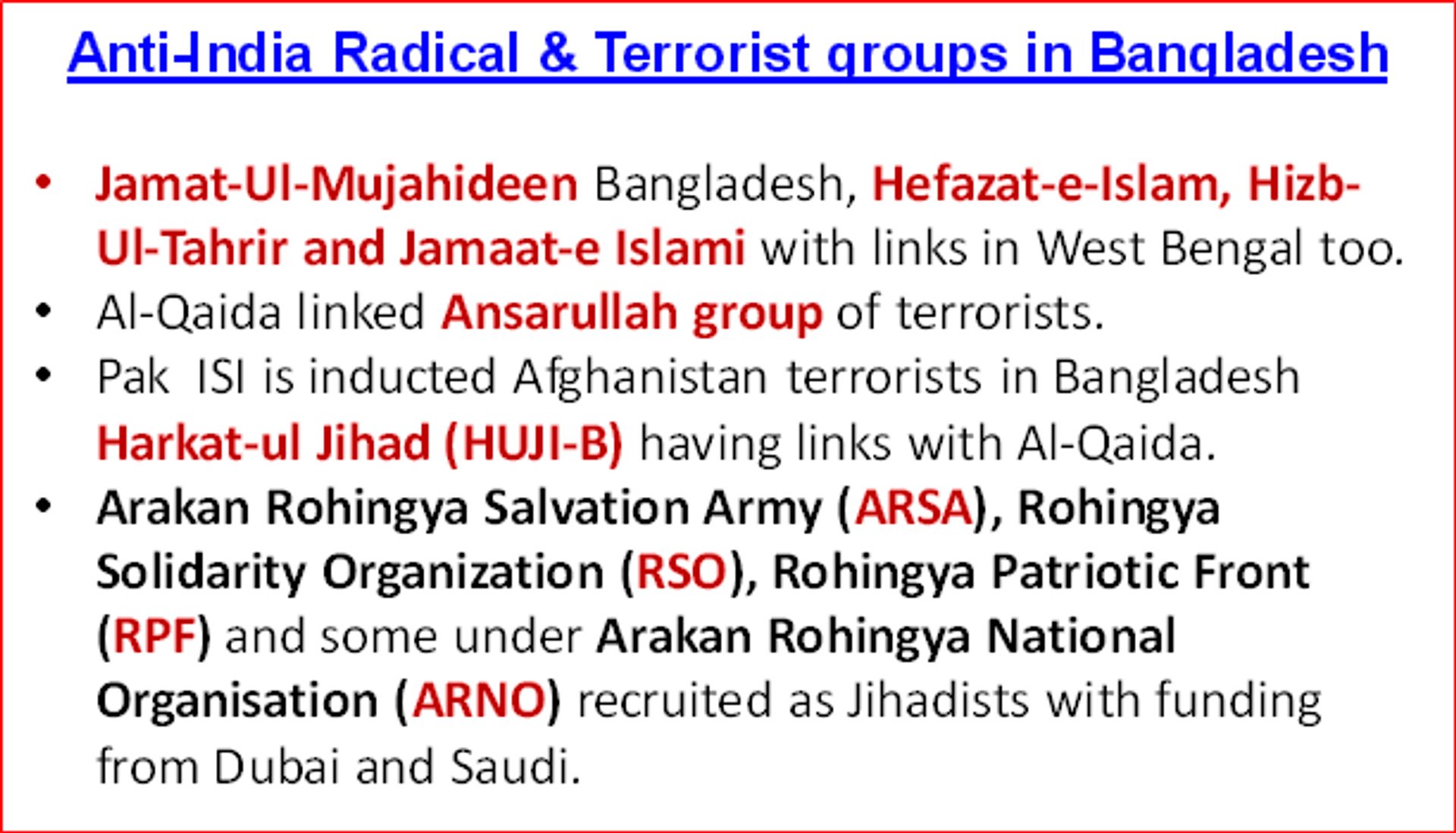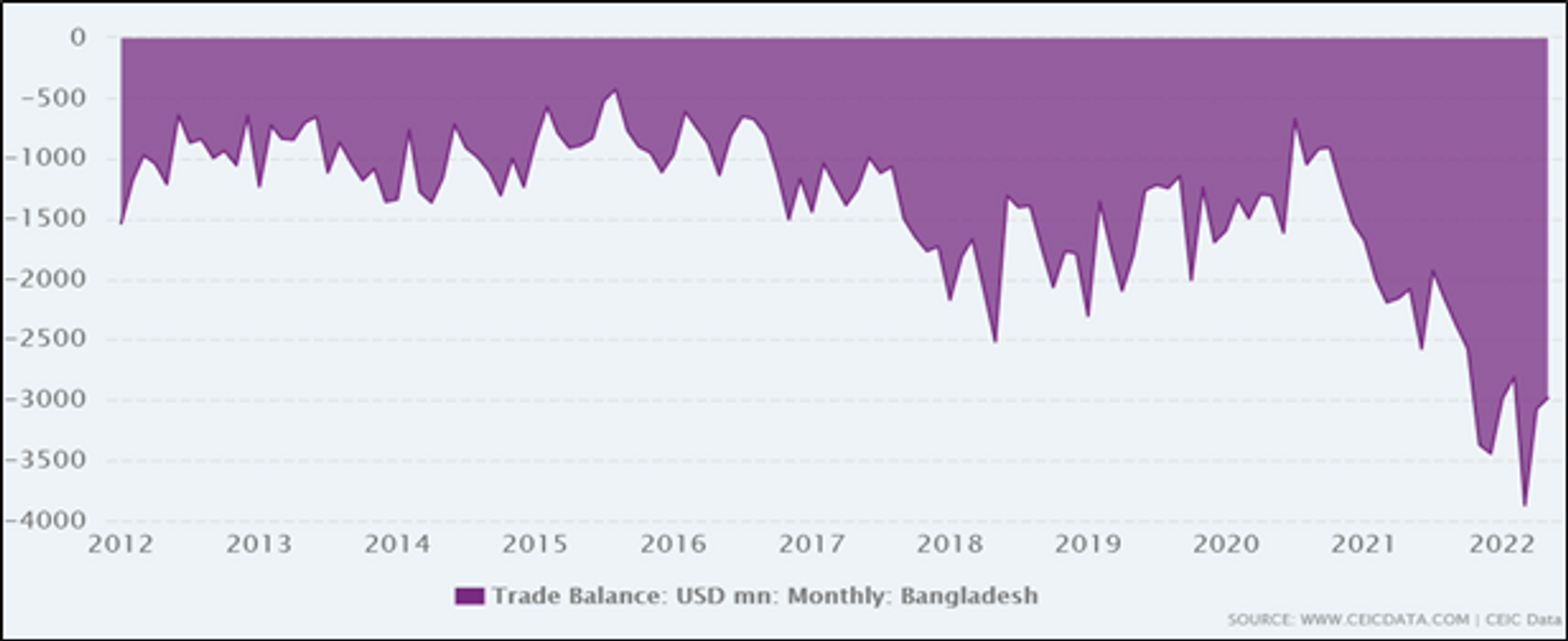
Indo-Bangla Relations: Cordial yet Sensitive
Bangladesh PM Sheikh Hasina is on her 4-day State visit to India wef 05 Sep 22. Her personal equation with the Indian PM Modi has been excellent. The two leaders have already resolved many thorny issues of 50 yrs or so but many challenges remain. PM Modi has been sensitive to Bangladesh’s concerns and has often leveraged in their favour to extent possible. The current visit of Ms Hasina provides an opportunity to further redress some of the contentious issues as mentioned in this article.
A look-back at the Indo-Bangla relations.
India and Bangladesh bilateral relations have been reasonably cordial since the latter’s liberation in 1971. The initial 4 yrs of relations under Sheikh Mujib was exemplary. Later the internal problems of the leadership in Bangladesh started reflecting externally, basically to divert own public attention. In the decade that followed, numerous bilateral issues surfaced. There have been see-saw moments in the bilateral Indo-Bangla relations that took a substantial time and effort to resolve. The half-hearted approaches of the leadership in Bangladesh and West Bengal had a significant impact on the non-resolution of those issues. The strain in the relation eased during the early 2020s under Indian PM Bajpayee that later culminated in signing of a significant landmark agreement (SAFTA) largely favoring Bangladesh in 2011. After Modi Govt came to power, a new chapter of friendship started. The thorny issue of numerous retro-national conclaves was resolved and connectivity & transit goods were facilitated by PM Modi. Modi’s gesture of ‘Act East’ has also improved many thorny issues. After Pakistan sabotaged the SARRC, Modi initiated the BIMSTEC summit meeting esp favoring Bangladesh.
Since 2019 many bilateral agreements are in force incl 7 MoUs on 06 Sep 22:-
- MoU for providing a Coastal Surveillance Radar System in Bangladesh.
- SOP on use of Chattagong and Mongla Ports for Movement of Indian goods.
- MoU on using 1.82 cusec of drinking water from Feni River for Sabroom, Tripura
- Import of bulk LPG from Bangladesh.
- Interim bilateral agreement on Kushiyara river water sharing
- MoU between CSIR India and Bangladesh on scientific cooperation
- Ministry of railways signed an MoU with Bangladesh to train personnel incl IT solutions;
- MoU between Bangladesh Television and Prasar Bharati extended by 3 yrs.
- MoU to promote cooperation in space technology and research collaboration
However, many contentious issues still remain between to two nations as mentioned below.
- Security challenges of illegal migrants, ingress of Jihadi elements into India,
- Resolving continental shelf issues in the Bay of Bengal.
- Increasing Chinese BRI and military hardware in to Bangladesh.
- Contentious issues: Balance of trade; Sharing of river water; illegal Bangladeshi and Rohingya migrants and the NRC;
The entire gamut of Indo-Bangla relations can be reviewed on the following fronts:-
Security. India continues having problems with the influx of illegal migrants, both their Bangladeshis and Rohingyas mostly seeking better livelihood in India but also members of various radical groups as enumerated in the text box below. The unofficial figure of such migrants are estimated to be around 5 Cr…and counting… although decreased after the border fencing. Govt of India plans to carry on a Pan-India NRC, so crucial to its security. No nation can close its eyes from the existence of illegal migrants on their territories. India must leverage its present warm relationship with Bangladesh, to take them back. The radical elements pose grave security risks.
Indo-Bangla international border on the land itself is over 4000 km long, mostly porous, since 73 yrs of partition. Of it, West Bengal has 2,217 km, Tripura has 856km, Meghalaya 443km, Assam 262km and Mizoram 180km. It is highly deplorable that the successive Congress, UPA as well as other govts remained indifferent to the continued illegal ingress of the Bangladeshis in to our land. Till now, 78% of India-Bangladesh border has been covered by fence that started way back in 1989. Fencing works of 90s are not robust, and is being trespassed regularly. There are several stretches without fencing and without credible vigil. The earlier fencing in many areas are about 100 meters inside the international border and this has been creating problems for the farmers cultivating those land. There are occasional reports of land-grab by the Bangladeshis.
Illegal migrants. The religiously persecuted minorities of Bangladesh had/have reasons to flee to save their lives and honour from the Jihadi attacks, with or without the connivance of Bangladesh govt. However, most of them come essentially for better livelihood and/or to grab land from the tribals and natives in the border areas. With such deliberate influx into Assam, West Bengal, Jharkhand and Tripura, the religious demography has been changing rapidly with threats to the native Hindus. They have spread all over India incl Delhi and J&K. It is unfortunate that the present opposition-ruled states favour their settlement as they serve as vote-bank. The illegal migrants have traditionally been serving as a vote-bank to the Congress party championing the cause of pseudo-secularism…the Muslims. Their political bosses make available to them fake identity cards and ration cards…a fact that made lot many of them to register in the NRC Assam. However, it is believed that a lot many of them are vulnerable to exploitation by the Pak-ISI as well as Islamic radicals and the Naxals/Maoists within, so as to pose a substantial security risk. Govt of India must take up with Bangladesh to take back their nationals after they are identified.
Persecution of Hindus in Bangladesh has been a sore issue. Every year the radical Islamic groups of Bangladesh commit atrocities and Indian Govt has been rather docile to it. Like many of the previous years, Hindus were persecuted during the 2020 anti-French protest as well as during Durga Pujas. It was noteworthy that Bangladesh had conveyed of repercussions to Hindus on the issues relating to Hijab row in India. However, Govt of India has been mum to the persecution of Hindus in Bangladesh. India must convey Bangladesh that any persecution may have repercussions. After all, India has been home to the huge number of persecuted Hindus fled from Bangladesh.
Connectivity to Bangladesh, transit of goods to NE States. In the recent years, Modi govt has reached out to Bangladesh with series of agreements on connectivity. The roads, re-starting of rail, starting the river link and also in the maritime route. Road links have undergone massive improvement. In addition to the four operational rail links between both countries namely Petropole (India)-Benapole (Bangladesh); Gede (India)-Darshana (Bangladesh); Singhabad (India)-Rohanpur (Bangladesh) and Radhikapur (India)-Birol (Bangladesh)…a 10.5 km fifth link was started between Haldibari (India) and Chilahati (Bangladesh) on 17 Dec 20. These are excellent development in the last 6 yrs of Modi govt. The rail link further connects N-E States transiting through Bangladesh. The bigger picture is to ensure that a rail (passenger or goods) can link Silchar with Kolkata and Katihar through Bangladesh. Similarly, the cargo from Chittagong port could be carried to N-E States. It is a win-win for all BIMSTEC nations.
The Chinese Factor. Emergence of China as major global economy is altering many of the older equations. Chinese willingness to invest heavily in the smaller nations through their Belt and Road Initiative (BRI) much beyond their repaying capability, is something that is being perceived as economic terrorism by the world. Pakistan and Nepal have already become debt-ridden under China. Bangladesh has been slightly careful but surely the Chinese influence are increasing. China is the largest investor in Bangladesh. A total of $24.45 billion bilateral assistance had been given for infrastructure projects and $13.6 billion in joint ventures. In addition, $20 billion in loan agreements has also been committed. China is known to influence political groups in various countries by favour money. In Nepal they influenced Communist party with 10s of millions of dollars for electoral purpose which is nothing but bribe. Hence, in the coming years, Bangladesh too will be lured in. India will have many reasons to be warry of the Dragon for encircling India with disruptive elements.
Trade-deficit. Bangladesh has been facing the problems of the trade-deficit and that cannot be alleviated significantly till their products are competitive with Indian goods. Of late, their readymade garments have caught international attention and even India is helping them in their exports. Recently bulk procurement of LPG for supply to the N-E states have started. Despite all these initiatives, the negative trade balance in the last 10 yrs has been growing as shown below. Bangladesh Foreign Minister Abdul Momen during his visit to India in Jun 22 expressed concern of the growing trade deficit. The two neighbors are working jointly to address the problems.
Sharing Electrical Power. Bangladesh has always been an electrical power-starved country. They earlier drew 600 MW from the Indian grid, with another 500 MW added through the Bheramara-Bahrampur inter-connection. The two countries agreed on a power evacuation scheme between Assam and Bihar, from which Bangladesh can draw 1000 MW power supply through tapping points at Parbotipur. Discussions also begun for additional supply of 340 MW from NTPC stations. These gesture by India has really been helpful for Bangladesh for its increased industrial power consumption requirements.
Water Sharing. The Ganga & Teesta river water sharing agreements have been a thorny issue. While West Bengal govt is extremely reluctant in any sharing of Teesta water, both nations will conduct a Feasibility Study of the proposed Ganges-Padma Barrage Project in Bangladesh for optimum utilization of the water received from India as per Ganges Water Sharing Treaty 1996. The Treaty guaranteed that for a total incoming flow of 75,000 cusecs in Ganga at Farakka, India could divert 40,000 cusecs from the Barrage, leaving 35,000 cusecs for Bangladesh. However, with the inflow diminished even below 60K cusec and the viability of the Farakka canal endangered with lower flow, India is unable to meet its obligation. On the other hand, Bangladesh keeps quoting of higher flow requirement for the Gorai Hump and Sundari mangrove which is just not possible to meet. The party politics within Bangladesh keep accusing each other while in opposition. It has become a political ball-game. This surely calls for a realistic review of the 1996 treaty. While ways and means of implementing the old agreements are on at higher level, newer accords were signed to share more resources of another six rivers namely Manu, Muhuri, Khowai, Gumti Dharla, Dudhkumar and Feni. This is a win-win for both nations for the present. However, difficult days are in offing when Brahmaputra water supply too will start hurting with the newly constructed Chinese Dam. As long as the inter-governmental relations are friendly, these adversities may be shrugged off but with change of government, the narratives may change for a worse.
Summary
As usual, Indo-Bangla relations have its own highs and lows in the past. However, the present leadership have the best of bilateral relations keen to resolve all sensitive (and some thorny) issues as well. They are even prepared to take the present cordial relations many notches up. Hawks in religious politics within Bangladesh have started taking a divergent approach. Radical Islamic powers of the country have started seeking allegiance with Jihadist forces in Pakistan and BNP shows full intent to harbour such forces. The present govt has been able to keep the jihadist elements at bay in the Indo-Bangla relations. However, in democracies, strange things do happen with change of governments. The recent unease among the radicals are showing their anti-India and anti-Hindu intents. Anytime the other political party BNP comes to the power, the bilateral relations are surely going to take a nose-dive course. There are very little options for the two govts but to make the relations as firm as possible. They have done a lot in the recent years but the tempo needs to be kept on. We jointly share our prides in the Vijay-Diwas but the radicals in Bangladesh do not feel it that way. It is a mixed feeling altogether for the citizen in the two nations.


